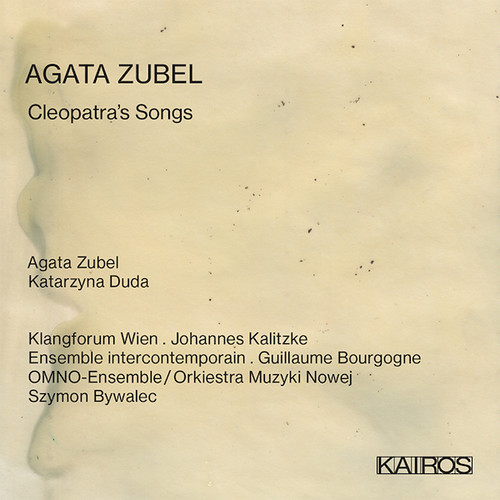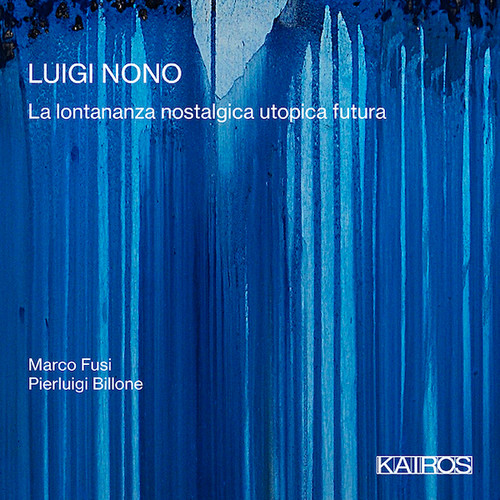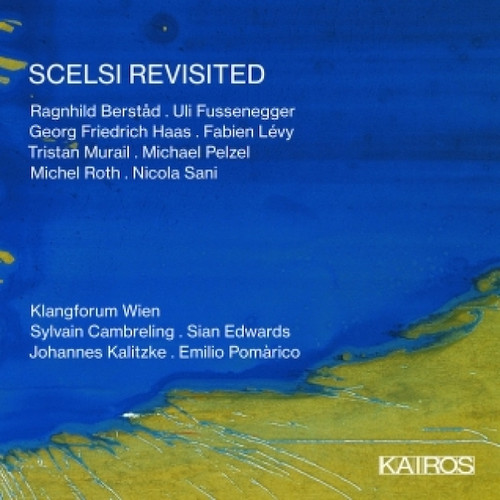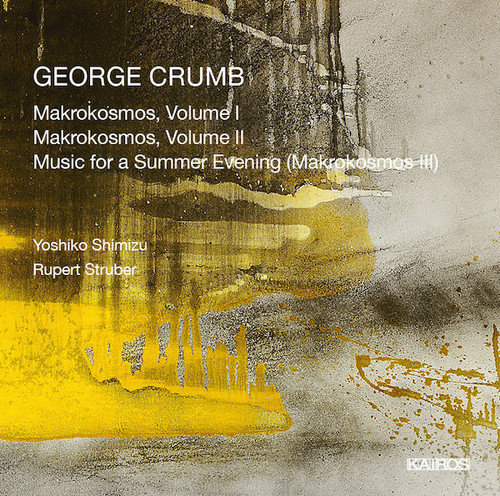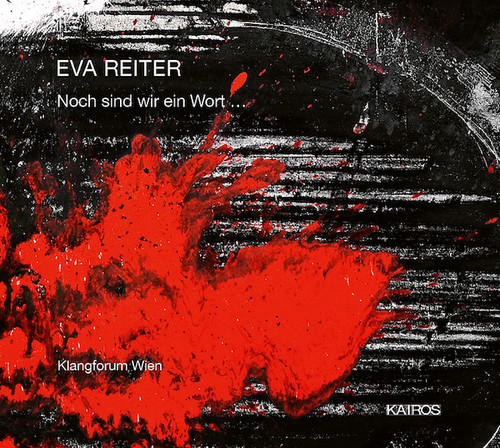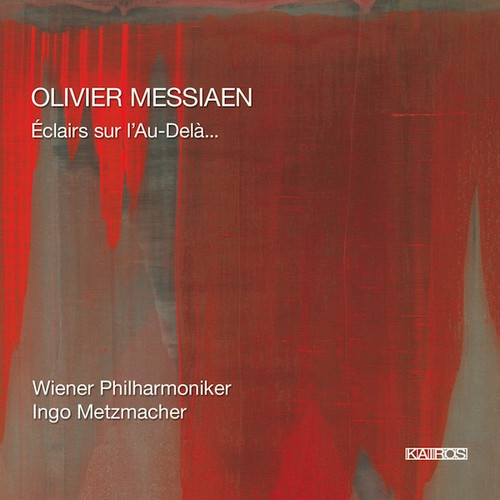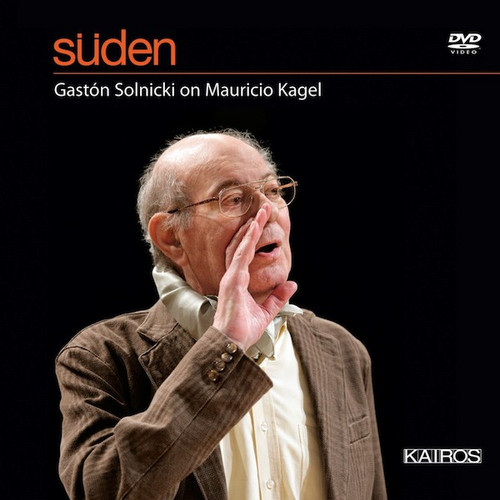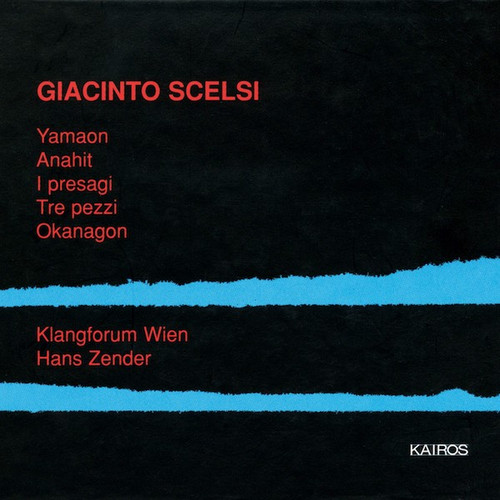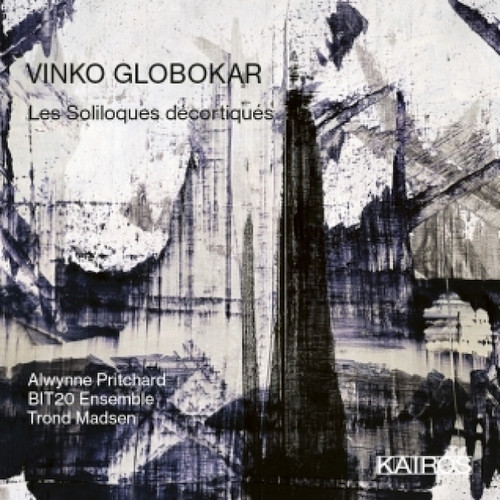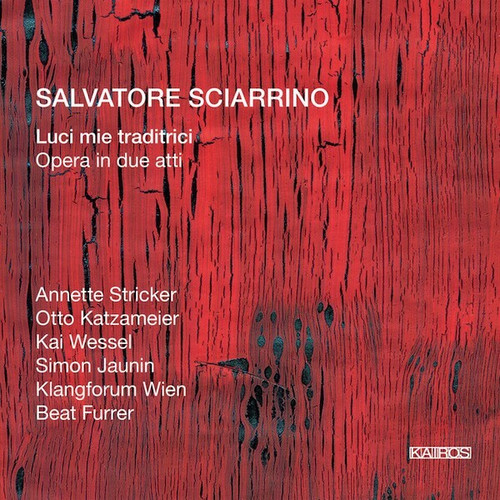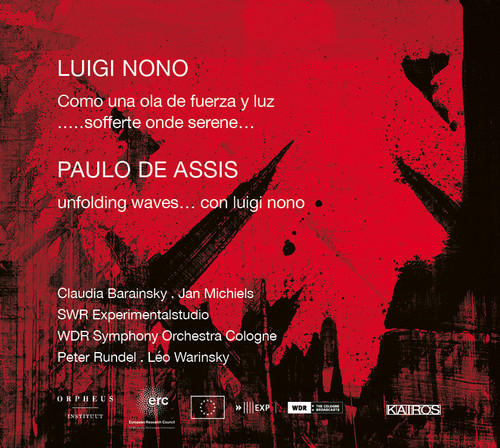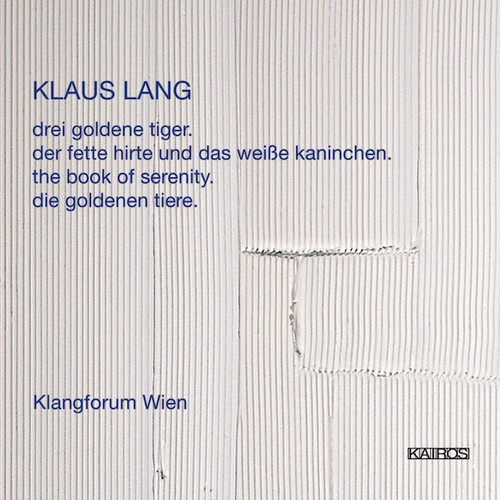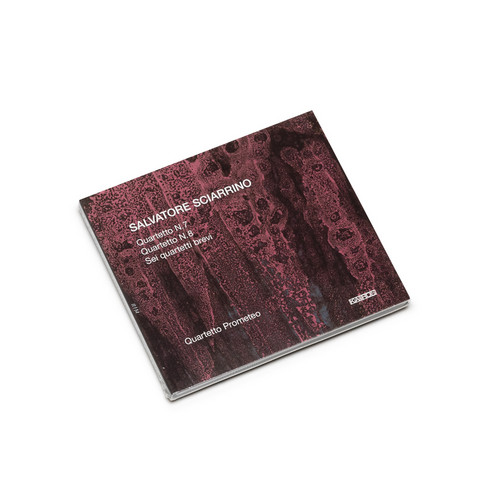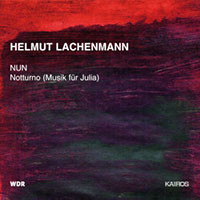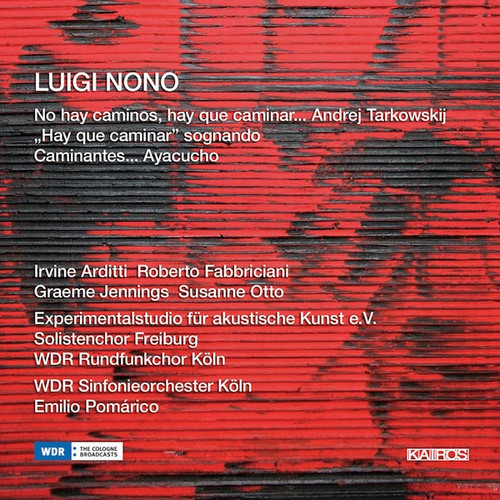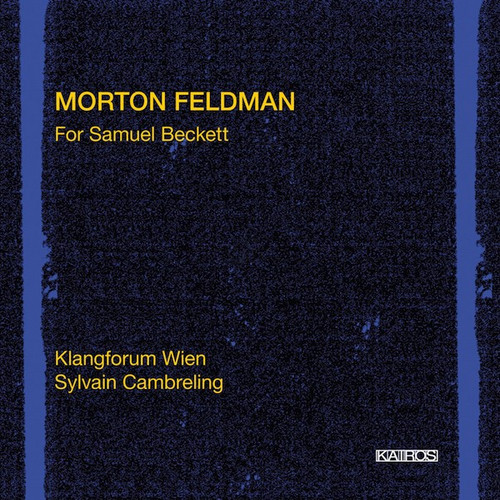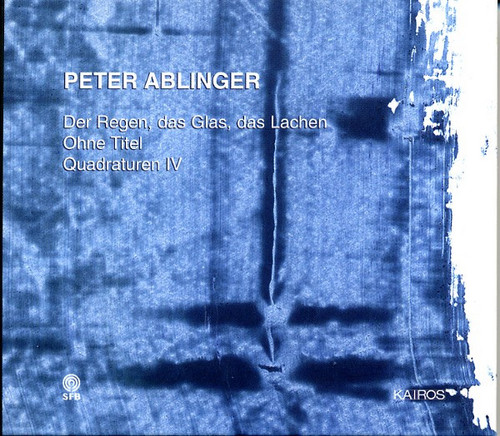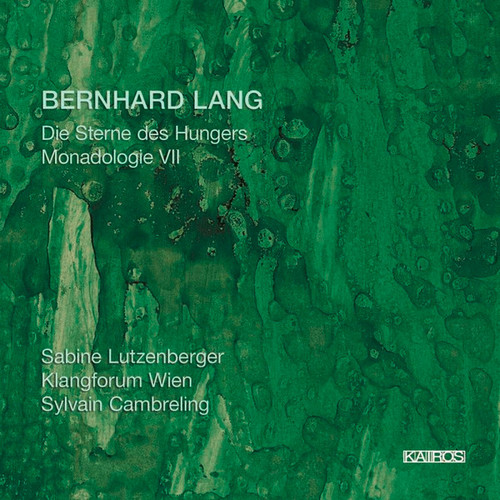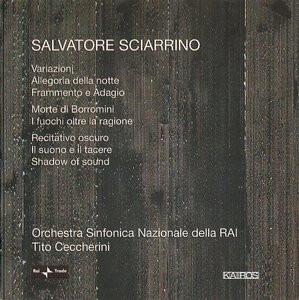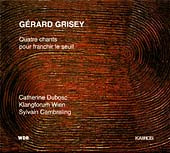★Kairos
Cleopatra's Songs
“Give me some music!” These words from Shakespeare’s Antony and Cleopatra, which open Cleopatra’s Songs, seem particularly well chosen to characterize Agata Zubel’s relationship to music. Music: a vital need, a thirst, but also something that you give.
This portrait album with three major works, performed by leading ensembles, including the Klangforum Wien and Ensemble intercontemporain, follows her receipt of the Erste Bank Kompositionspreis in 2018.
La lontananza nostalgica utopica futura
Experiencing La lontananza utopica futura has enriched my musicianship. The unusual openness of the original materials by Nono required the establishment of an interpretive path through tapes and scores. This need has led to the emergence of a creative approach to performance, where the lines between roles and figures are blurred; with La lontananza, we cannot identify the composer as the provider of clear and direct instructions, and the performer cannot remain an invisible score-reproducer. A …
Scelsi Revisited
In the project Scelsi Revisited the tape material is for the first time reflected in the medium of art: seven composers (Ragnhild Berstad, Georg Friedrich Haas, Fabien Lévy, Tristan Murail, Michael Pelzel, Michel Roth, Nicola Sani) were commissioned by Klangforum Wien to create new works from Scelsi’s tape music; Uli Fussenegger had prepared data packages consisting of excerpts from two to three tapes each, which Scelsi apparently had not used for the elaboration of definitive works, the latter …
Makrokosmos I-III
Makrokosmos Volume I, whose title reflects Crumb’s admiration for Bartók’s piano series Mikrokosmos, contains 12 pieces, grouped into three parts of four each, and Crumb associates each piece with a sign of the zodiac. This is paired with Volume II, which is similarly structured, after the fashion of Debussy’s twenty-four Préludes. Volumes I and II are filled with references to the history of humankind, myths, Christianity, paganism, occultism, literary works, and the composer’s own mental pictu…
Noch sind wir ein Wort
I would like to refer to Annette Bik’s project Bach gedoubelt, which was the origin of this piece, putting Bach’s b-minor partita, BWV 1002, in direct context with contemporary musical comments. Bach wrote so-called “Double” movements to the standard dances Allemanda, Corrente, Sarabande and Tempo di Borea, connected to the original as a kind of variation. Annette Bik commissioned four composers to write such “Double” movements to the four main movements of the Partita. This lead to four contemp…
Èclairs sur l'Au-Delà...
“I will say: I have given this flame to these eyes; I have drawn from the ambiguous smile of the moon […] these two naïve stars open to the infinite”, wrote the poetess Cécile Sauvage in 1908 to her unborn son, Olivier Messiaen. It is amazing that the poem in a sense expresses in a prophetic manner Messiaen’s interest in and passion for themes that were to accompany him throughout his life: the cosmos, infinity. It goes without saying that the poetic lifestyle of his mother was to have a strong …
Süden: Gastón Solnicki on Mauricio Kagel
111 cyclists reach famed opera house Teatro Colón to welcome Mauricio Kagel (1931-2008), one of the great composers of the 20th Century, who was born in Argentina, but left the country and settled in Germany in 1957. However, his adventurous music remained an inspiration to a number of forward-thinking Argentinean musicians, and in 2006 he returned to Buenos Aires for a Kagel festival, where he was to direct a major concert by the Buenos Aires Philharmonic, but also worked with a group of young …
Yamaon
Yamaon (1954-1958) for bass, alto saxophone, tenor saxophone, contra bassoon, percussion and doublebass is one of the wildest and most direct works of Scelsis. Just as the composition I presagi completed in the same year, the title warns of the destruction of a Mayan city. As Varèse in Ecuatorial and Nocturnal, Scelsi in Yamaon works with a differentiated repertoire of vowels, consonants, and syllables. These have no linguistic semantic meaning, but convey heterogeneous values of expression. “Wh…
Les Soliloques décortiqués
Les Soliloques décortiqués for 16 musicians is dedicated to the musicians performing this piece. Each instrument is a soloist for 90 seconds, time dedicated for him or her to experiment with instrumental techniques that I consider rather “daring”. Meanwhile, the other 15 instrumentalists try to put the soloist’s “discoveries” on their own instrument. - Vinko GlobokarVinko Globokar (born 7 July 1934) is a French-Slovenian avant-garde composer and trombonist. Globokar's work is noted for its use o…
Luci mie traditrici
A voice behind the curtain. Antique beauty disappears: It will always return, the same music, and each time it will be marked by the wounds of time. And throughout the entire work it accompanies the events that are not told. Little happens, almost nothing. But every action leaves behind infinite echo. Shadings, insinuations, contradictions that accumulate and change; before and after, full and empty; impenetrable silence, in which question blurs into question and answer into answer. A magnificen…
Como una ola de fuerza y luz - Unfolding Waves
Between April and June 1971, after the democratic election of Salvador Allende’s government, Luigi Nono visited Chile for three months, meeting several artists, composers and politicians, among whom was Luciano Cruz Aguayo, one of the leaders of the Movement of the Revolutionary Left (MIR, Movimiento de Izquierda Revolucionaria). Back in Italy, Nono started working on his next musical composition, which was meant to be a piece for piano and orchestra, for Maurizio Pollini and Claudio Abbado. In …
The Book Of Serenity
It was Ludwig Wittgenstein, another Austrian, who already in his debut work identified the borders: in his opinion, he wrote in the preface to his Tractatus logico-philosophicus, he had “essentially resolved” those problems accessible to rational thought, and precisely that would demonstrate “how little is achieved that these problems are resolved.” Even greater emphasis is lent to this insight in the famous sentence with which Wittgenstein closes his Tractatus not even a hundred pages later: „W…
Quartetto N.7 - Quartetto N.8 - Sei Quartetti Brevi
Kairos is proud to announce the release of three string quartets by renowned Italian composer Salvatore Sciarrino, recorded by the brilliant Quartetto Prometeo. The group has worked closely with the composer for years, leading him to dedicate two pieces to it, one of which is included on this CD, the Quartetto No. 8.
The three quartets, Quartetto No. 7, Quartetto No.8, and Sei quartetti brevi were written over a time span of fortyone years, but despite this long range of time, Sciarrino’s idiosy…
Nun
Lachenmann seems to continue nurturing the modernist aesthetic,perhaps that it had passed/eclipsed the German experience, something Habermas has said, and that we do live in an age of new opacity, or complaisance (Undurchsichtlichkeit). It is fascinating still to contemplate the state of music Now,(Nun) from this fragile state,a broken timbre "zerbrechlichen klang", one where the creator/composer needs to begin again and renew timbre for the future,find new contexts for works or simply th…
Caminantes... Ayacucho
2007 release - Luigi Nono No hay caminos, hay que caminar … Andrej Tarkowskij (1987) “Wayfarer, there is no path. Yet you must walk”, in Spanish: “Caminante, no hay caminos. Hay que caminar.” These words are the contents of an inscription, which Luigi Nono read on the wall of a monastery in Toledo in the middle of the 1980s. They must have affected him most deeply, since in the last three years of his life he made them the basis of the titles of a trio of works. In “Hay que caminar” he surely re…
For Samuel Beckett
1999 release - For fifty-five minutes the great American composer Morton Feldman weaves his tapestry of sounds, a pattern always the same and yet never the same, an iridescent, thick fabric, full of details, although these never distract the listener's attention. Feldman met Beckett only once in his life (though Beckett later sent him a postcard on which the composer discovered the text for his opera Neither). He created music of a beguiling tonality and beauty, inspired more by painting and lit…
Der Regen, das Glas, das Lachen
1998 release - While standing at the waterfall, we become aware of our thoughts, but not the waterfall itself; if we succeed in letting our thoughts stand still, we hear a melody within the turmoil. Everyone his own. (Peter Ablinger)
Die Sterne des Hungers
The Stars of Hunger, was composed in 2007. It is based on three poems by the Austrian poet Christine Lavant: “Im rueckgrat aufwaerts glimmt ein licht,” “So also geht erleuchtung vor,” “Zeig an mir die kräuter welche bestärken” and “Lösch aus mein gesicht und führe mich blind.” Rather than set the poems themselves to music, Lang used the text generation program Abulafia to produce from them a cut-up in the tradition of William S. Burroughs. The composition contains only fragments of the po…
Orchestral Works
“Orchestral Works” collects the best of the production of this Sicilian composer with eight pieces on 3 CDs: the box - entirely dedicated to Sciarrino - is the result of the collaboration between this musician and Rai Trade. "He searches for exeptional situations that throw the listeners back upon themselves. These can be deliberately designed to lead right to the edge of madness, but also to relaxed medidation. Just as silence counteracts the noise of everyday life, slowness is also a count…
Quatre chants pour franchir le seuil
... As only few other composers, Gérard Grisey was a master at working in these various "altidudes", one who skilfully zoomed back and forth between micro- and macro-time, or, in Grisey's beautiful imagery, between human time and the extended time of whales and the extremely compressed time of insects. and this disposal of time, of the hearing perspevtive - Grisey certainly knew it - affords the music a power that touches on the metaphysical just as the texts of "Quatre chants" do. "Fertilised w…
